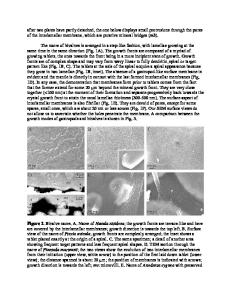Cellulosic Ethanol: A Unique Sustainable Liquid Transportation Fuel
- PDF / 293,188 Bytes
- 3 Pages / 582 x 780 pts Page_size
- 76 Downloads / 338 Views
Cellulosic Ethanol: A Unique Sustainable Liquid Transportation Fuel Charles E. Wyman (University of California–Riverside, USA)
What Is Cellulosic Biomass?
six carbon atoms efficiently, they do not use the five-carbon sugars arabinose and xylose well, and bacteria and yeasts have been genetically modified to accomplish this task. Following fermentation, the broth then passes into a distillation system for recovery and concentration of the ethanol, while the lignin and other portions not converted into ethanol can be burned to generate all of the heat and electricity needed to run the entire process, with excess power left to export to homes and businesses. The sugars released during pretreatment and/or enzymatic hydrolysis of hemicellulose and cellulose could also be biologically or chemically converted into other products in addition to ethanol, and lignin, an aromatic compound, could be employed to produce various materials such as adhesives and fillers.5
Although ethanol is now made from the sugars in the starch fraction of corn and other crops and from the sugar in sugarcane, a much greater impact for ethanol in terms of fuel use could be realized if the sugars from more recalcitrant cellulosic biomass could be converted to ethanol. Cellulosic biomass is the structural portion of plants and includes agricultural (e.g., corn stover, which is all of the above-ground portion of the corn plant, excluding the grain) and forestry (e.g., sawdust) residues, major fractions of municipal solid waste (e.g., waste paper and yard waste), and herbaceous (e.g., switchgrass) and woody (e.g., poplar) crops grown as energy resources.1 Although distinctive in outward appearance, these materials all comprise about 40–50% cellulose and 20–30% hemicellulose, with lesser amounts of lignin and other compounds such as sugars, oils, and minerals. Cellulose is a polymer of glucose sugar molecules that are physically linked together in a crystalline structure to provide structural support for plants. Hemicellulose is also made up of sugars covalently joined together in long chains, but it generally includes five different sugars: arabinose, galactose, glucose, mannose, and xylose. In addition, hemicellulose is an amorphous, branched material. Lignin is a phenylpropene compound that can be viewed as a low-sulfur, immature coal.
Benefits of Cellulosic Ethanol
Petroleum provides more energy internationally than any other source, accounting for about 35% of total energy produced, and unstable regions of the world hold the bulk of all known reserves. In addition, because over half of the petroleum is used for a transportation sector that is almost totally dependent on petroleum, developing alternative sources of liquid transportation fuels is vital to alleviating this perilous dependence,6 with biomass uniquely suited to sustainably meet this need. As one measure of its abundance, the U.S. Department of Agriculture (USDA) and Department of Energy (DOE) recently projected that about 1.3 billion dry tons of cellulosic biomass could be produced
Data Loading...











